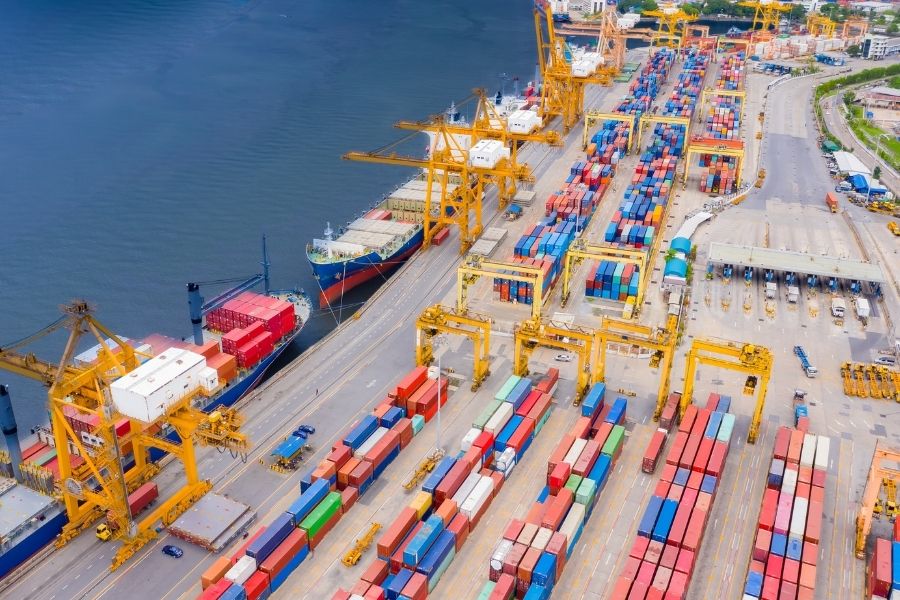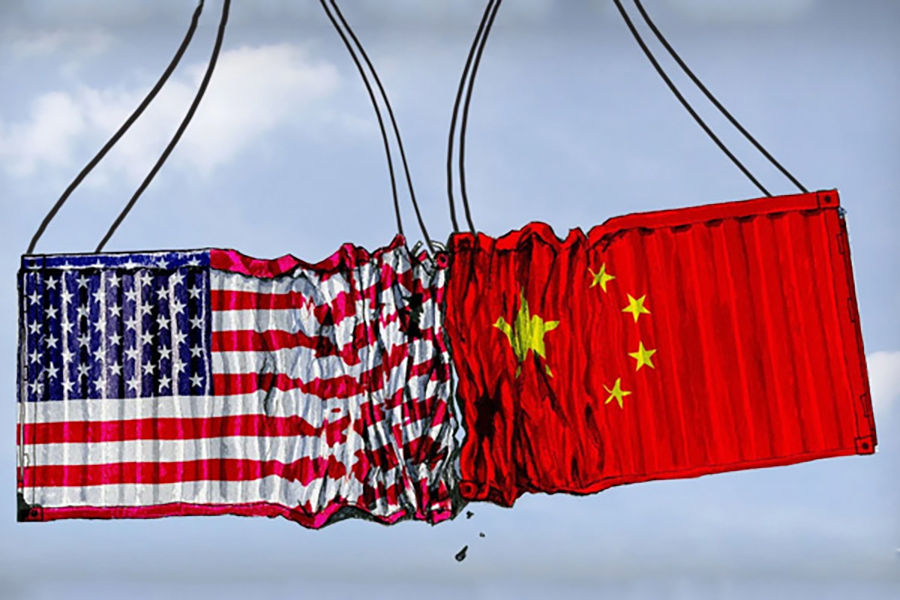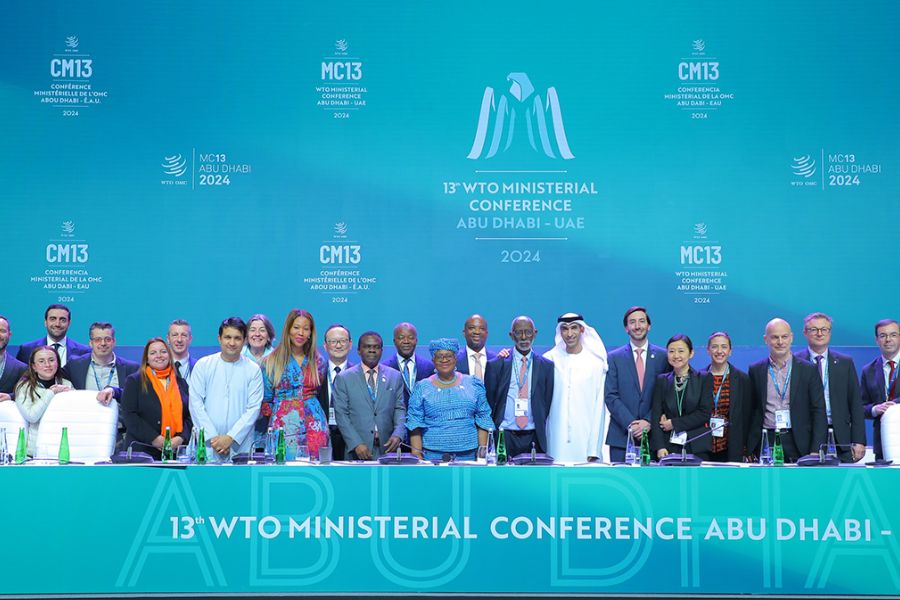Shaping the future of India’s Exports
With improved domestic capabilities and alignment of Government and industries’ objectives, India can further build on the current growth momentum in exports to achieve the US$ 1 trillion target. This necessitates improved international engagement as well as strong policy alignment at the central and state levels.
- India has achieved the highest monthly value of merchandise export in March 2022 amounting to US$ 40.38 billion, an increase of approximately 15% over March 2021.
- To make India a US$ 5 trillion economy by 2025, the Government is undertaking a multi-pronged pathway. On one side, it is aiming to build up the supply side for enhanced domestic competitiveness. While on the other, it is focusing to expand international market access for higher demand.
- The spate of global crises in the past few years have, on one side, disturbed the existing economic structures and exposed their fragilities. On the other, these global crises have provided India with an opportunity to expand its export.
- In the long run, the realigning of the world order will provide an exceptional prospect for India as it stands to gain greater access to Western markets in particular.

Despite the unprecedented challenges posed by the COVID-19, Indian exports have bounced and surpassed the pre-pandemic levels. The vision of “Aatamanirbhar” and the timely interventions of the government to revive domestic demand has played a vital role in nurturing exports. India has achieved the highest monthly value of merchandise export in March 2022 amounting to US$ 40.38 billion, an increase of approximately 15% over March 2021.
Earlier it has been observed that low-value-added products had a major contribution to India’s export basket. However, this surge in exports has painted an optimistic picture of export diversification. The top categories of exports were ranging from the sectors like engineering goods, processed petroleum, gems and jewellery, organic and inorganic chemical, pharmaceutical, and drugs. This demonstrates advancements in the domestic-value addition and enhanced manufacturing capacities of the country.
Initiatives to boost exports
To make India a US$ 5 trillion economy by 2025, the Government is undertaking a multi-pronged pathway. On one side, it is aiming to build up the supply side for enhanced domestic competitiveness. While on the other, it is focusing to expand international market access for higher demand. For strengthening the export ecosystem, the Government has undertaken various initiatives and policies support like PLI, RoDTEP, PM Gati Shakti, TIES, DEH, etc. To gain higher access to global markets, India is engaging and negotiating various trade deals, especially with large economies like Australia, Canada, the UK, UAE, the EU, etc.
The accomplishment of the vision to make the country “Aatamanirbhar” requires an efficient and focused policy shift to strengthen domestic supply chains. For this, it is requisite to promote a strong engagement with the states/UTs for various policy mechanisms to develop institutional structures and to identify the intervention for advanced export ecosystems.
Recently, the format of ‘competitive, cooperative federalism’ has sparked efforts across states to work towards developing a conducive environment for stakeholders across the value chain in realising their full potential. One of the cohesive efforts of the government to convert each district into an export hub has infused renewed ideas of decentralizing the planning process, putting local stakeholders at the focal point. However, identifying export potential at the grassroots levels and developing institutional frameworks requires an understanding of the areas of intervention.
In alignment, the NITI Aayog has also launched the EPI index to evaluate the readiness and capacity of states concerning their export potential. Simultaneously, the Ministry of Commerce and Industry has launched LEADS for logistics availability across states. Therefore, ground-level interventions based on the performance of states and UTs in the indices like EPI and LEADS can ensure a strong supply chain with a competitive edge in the global market.
Over the past few years, various policy steps have been undertaken to stimulate the domestic manufacturing industry to push exports. For example, the government announced the PLI in several key sectors to incentivise production. Around 50-60% of incentives are likely to support domestic manufacturing and exports and the remaining will focus on localisation of imports.
Furthermore, a new scheme – RoDTEP – has been announced to facilitate exporters more efficiently. To improve the existing export infrastructure, the government has recently launched the Pradhan Mantri Gati Shakti plan, a national master plan to provide multimodal connectivity infrastructure to reduce logistics costs and build signature infrastructure assets. All these steps aim to aid the domestic industry for size and scale expansion and to target the untapped new destinations for the country’s exports.
Major global challenges and way ahead
In recent years the global economy has witnessed major episodes of disruptions resulting in the slowing down of economic growth. The global economy was struggling to curtail the negative impact of the trade dispute between US-China on the global supply chains, and the COVID-19 happened. As a result, it has severely impacted the global economic growth and the recovery from adverse effects is still behind the targets.
One of the most essential components to push economic growth is export flows, which were gravely affected due to the imposition of lockdowns, and restricted mobilities among major economies. Furthermore, events such as the Suez Canal Blockage have further obstructed global trade recovery. The latest geopolitical tension between Russia and Ukraine at a time when the world economy is struggling to recover from the debilitating blow of these collective negative shocks will further prolong the recovery process.
These crises on one side have disturbed the existing economic structures and exposed their fragilities. On the other, these global crises have provided India with an opportunity to expand its exports via re-crafting policies, with a major focus to bolster local manufacturing capabilities and promote “Make in India” globally. As the western block seems to lessen the reliance on China and Russia, it opens new avenues for India to expand its trade ties.
However, to capitalise on this opportunity, India needs free access to these markets for seamless trade flows. The bilateral relationships of India recently have prospered, as it is engaging with economies that have enormous potential to expand trade flows. In the long run, the realigning of the world order will provide an exceptional prospect for India as it stands to gain market access to the western bloc. When synergised with the current redefining and sharpening of strategies to uplift domestic manufacturing, India can acquire a greater share of global exports.
While the growth trend in exports is laudable, the national and state-level export policies must be aligned for seamless export flows to maintain the pace going forward. To maintain the momentum, some of the key areas of focus are as follows:
- Active participation of states to strengthen export infrastructure: For smooth flow of trade, well-established facilities like air cargo, multimodal logistic hubs, ICDs, etc., are vital. Therefore, to drive India’s exports further, states must evaluate the sectoral-based interventions to improve infrastructure for cost-competitive exports.
- Mutually beneficial trade agreements: The new trade agreements must focus on sectors with higher complementarities and potential. In addition, FTA negotiation strategies must be aligned with the self-reliant strategy and the states must actively engage domestic stakeholders to bring their perspectives to the table.
- Trade Monitoring at the State level: To augment the country’s exports, it is imperative to continuously track and monitor progress of various parameters such as export growth trends, status of logistics and infrastructure facilities, progress of export action plans, progress against the gaps in indices of trades, etc at the state level. For this, a crystal-clear plan is to be developed for rigorous trade monitoring.
With improved domestic capabilities and alignment of Government and industries’ objectives, India can become a global manufacturing powerhouse. For the country, a new era of export-led growth is unfolding. The future of India’s trade looks bright with the present multi-prolonged efforts of the Government to develop the overall trade ecosystem.

Dr. Javeria Maryam has Ph.D. in Economics from Aligarh Muslim University India. Her doctoral thesis analysed the regional trade relations between India and the rest of the BRICS economies and suggested how to further strengthen the intra-BRICS trade flows. She has worked as a consultant with KPMG in India, where she has provided research for the sectoral- exports of states.
She has also worked at the Center for WTO Studies-A think-tank of the Ministry of Commerce, Government of India. She has undertaken the meticulous analysis of international trade agreements, negotiation proposals, and policy documents to understand economic and political implications at the domestic and international levels. Views expressed are personal.













Leave a comment